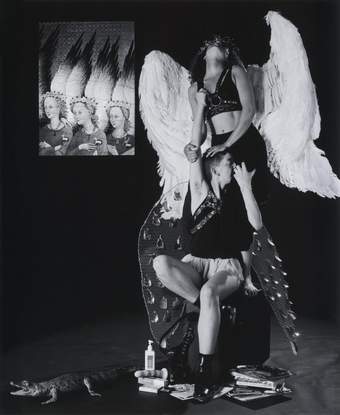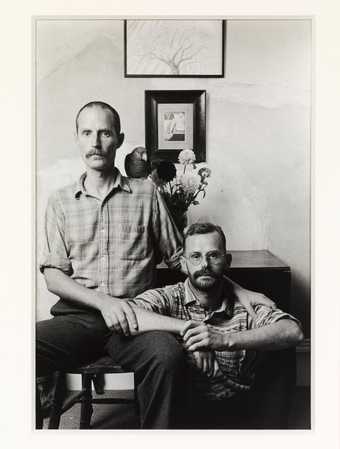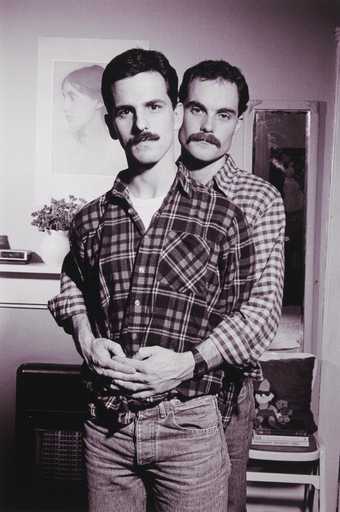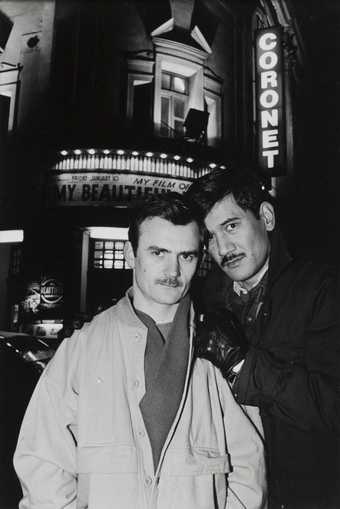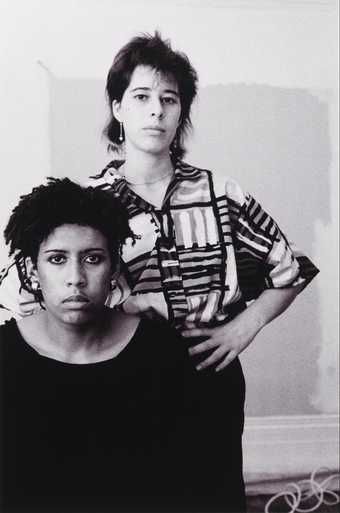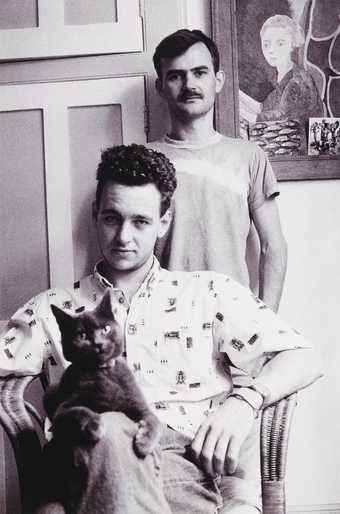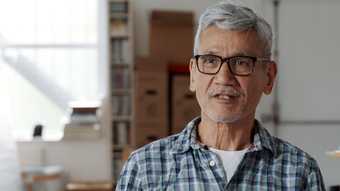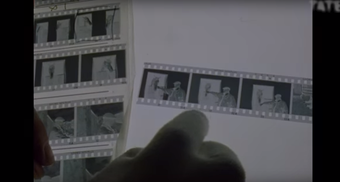They were taken in 2007 and they are part of an ongoing series called Mr Malhotra’s Party and the name of the series comes from what gay nights in Delhi are referred to, which are held in commercial bars and clubs, but because it’s illegal there, they are deemed as private parties. Part of the underlying motivation is to show to people, especially in Delhi itself, that gay people are very ordinary looking, and part of just the social scene, part of the family structures that people live in. This high degree of invisibility and so on in India is creating a huge crisis, so what has changed, what I find now, is that the younger generation is much more impatient and wants the law to be changed, and they want to have their freedom, and they want it now. And they are much more up-front about being queer or being lesbian or gay. So these are two such people. I prefer to photograph people that I know personally, not use models, and not use strangers, because I feel there is a relationship between me as the photographer and them as the subject, which carries over into the pictures. I photographed them in places that they normally would live and work in, so it’s a departure from, again, the eighties series where I would photograph people in public spaces, but in very architectural spaces. Because when I first began to shoot gay people in Delhi, I had a... it would have been relatively easy to shoot reportage type pictures. You know, I could have hung out in the public spaces with a camera and just taken pictures. That’s what I’d learnt to do. It was then that I decided to do this constructed image, which is to get to know a small group of people. They then tell you what, inform you about what’s happening. They become the cast, so then they go to the places. So similarly these people are colluding, they are part of the process of making the picture. But what I like about India is that the street is like a theatre. So as you can see, tons of stuff happens around. So although the main subject and I are fixed and static, there is all this business, like it’s changing every second, what’s happening around the person. It’s like, it’s very lively. So I’m quite drawn to something that’s quite solid-looking, you know, compositionally. I mean, it’s partly because my pre-formal training, if you’re going to call it training, was I was in North America, and I was actually in New York doing an MBA, and I stopped going to the classes and went to photo-school and one of my teachers, she said, Darling, you should take photographs, and I said, Lisette, but how am I going to live? Middle-class Indian boys can only do medicine, engineering, or MBAs. [laughs] That was our fate. That’s the time I was doing those Christopher Street pictures, and she was very keen that one should take pictures of things that interest you, and not go to museums. She said, ‘darling, when your work is dead it will be in the museums’. I’m feeling a bit like, oh! This is too soon. I’m still around!

